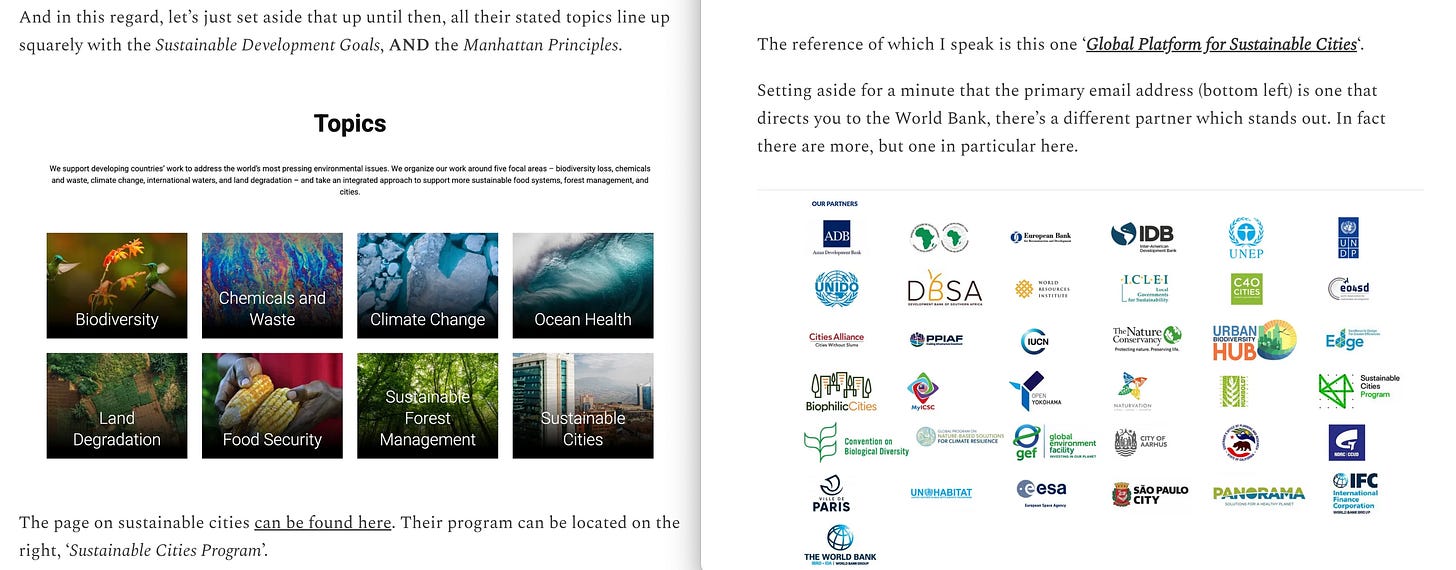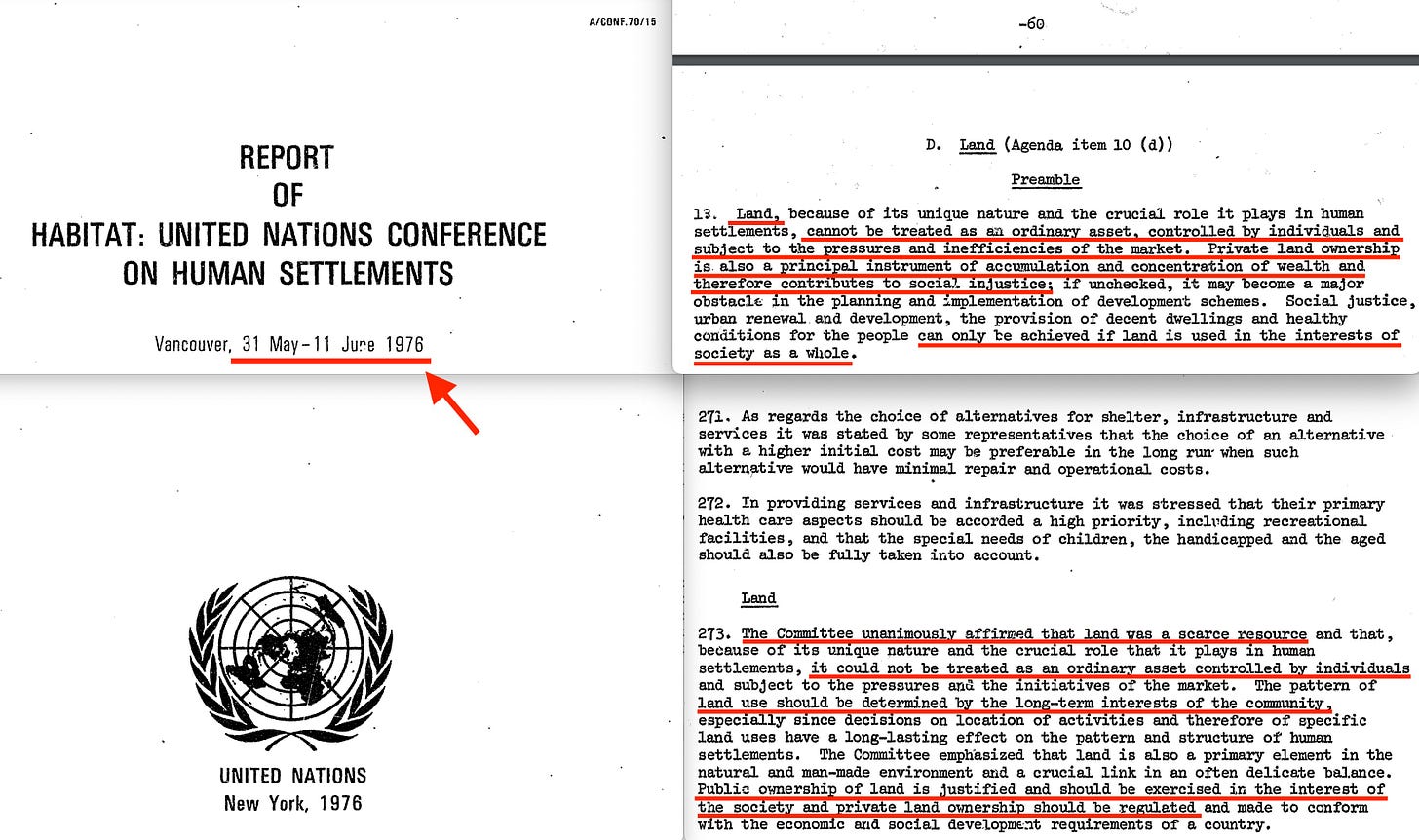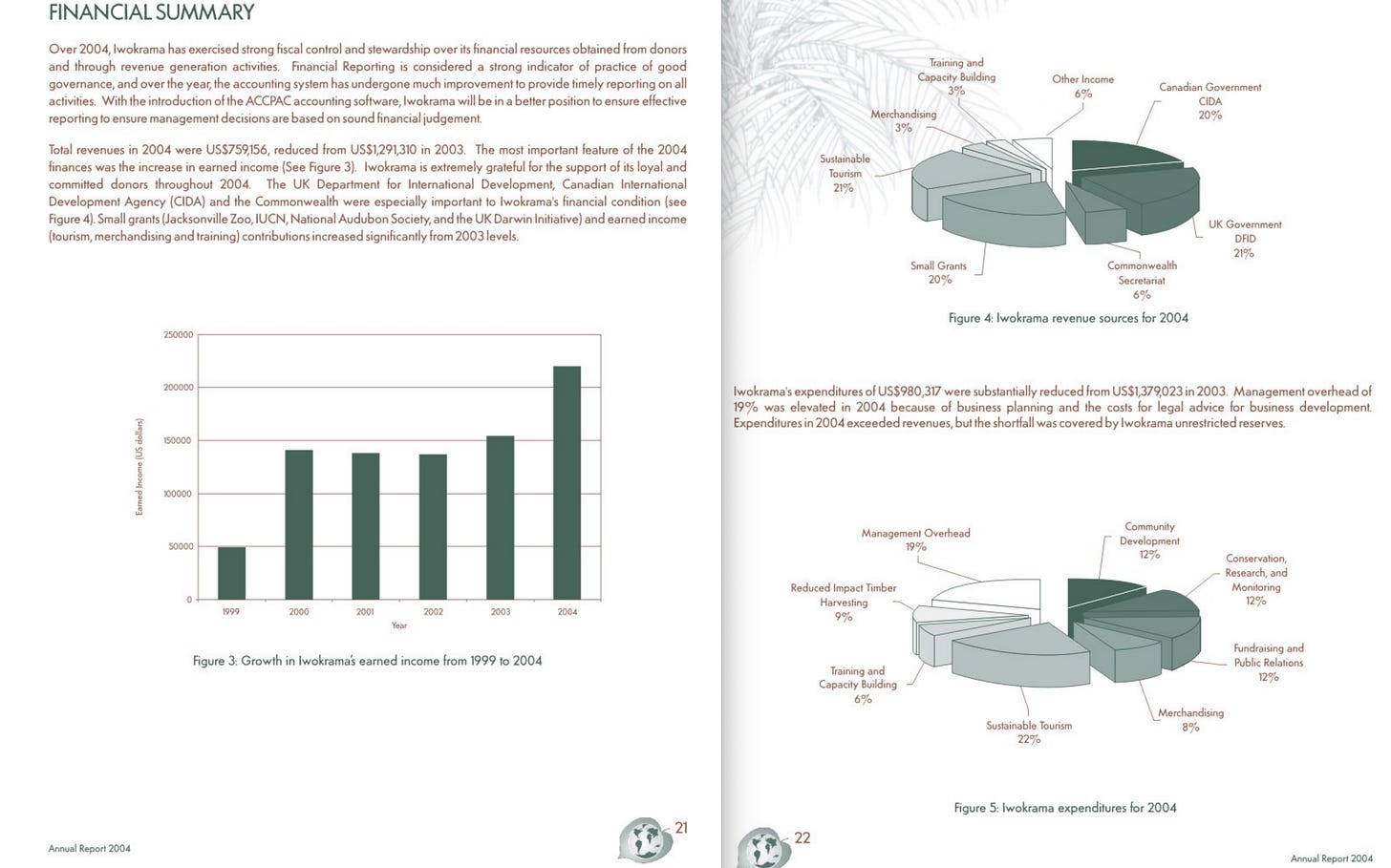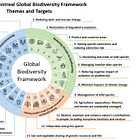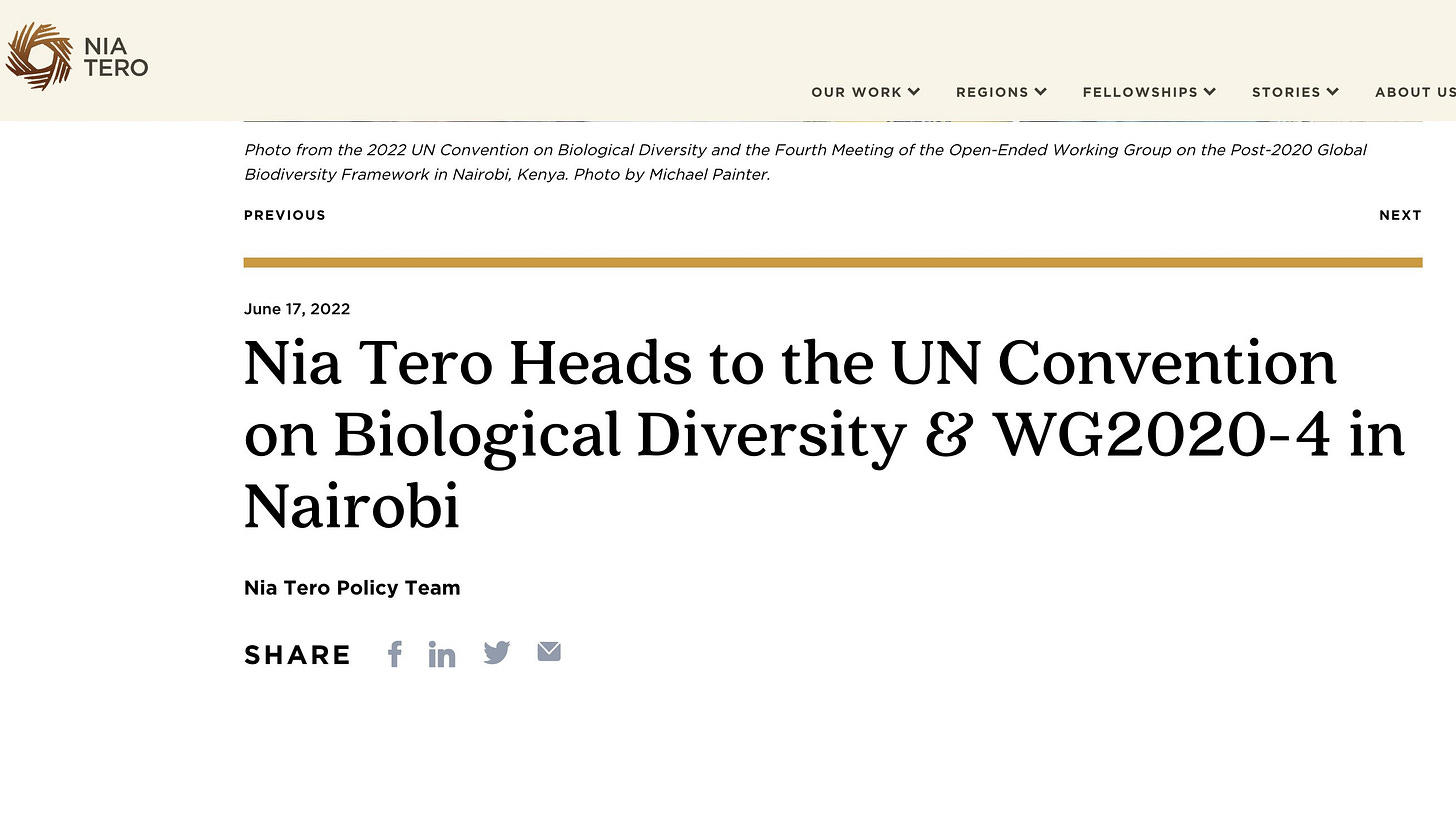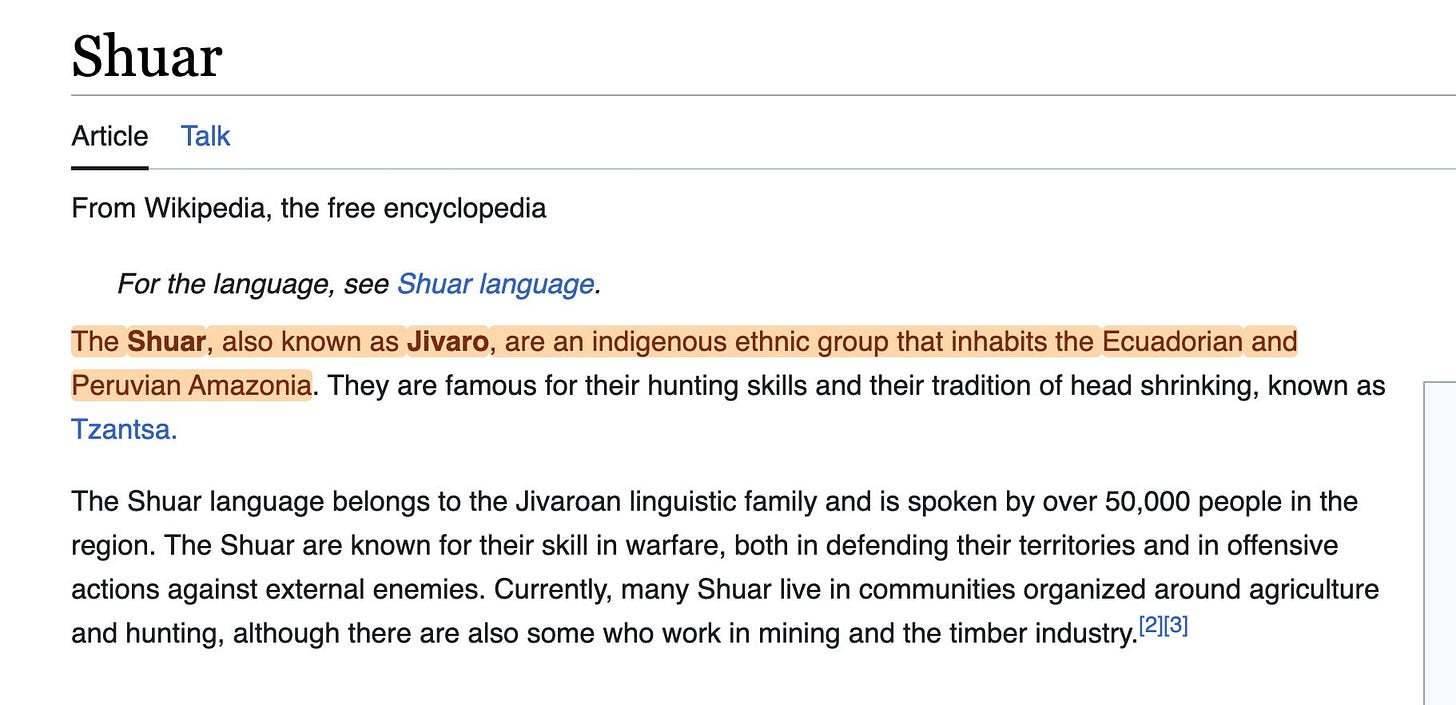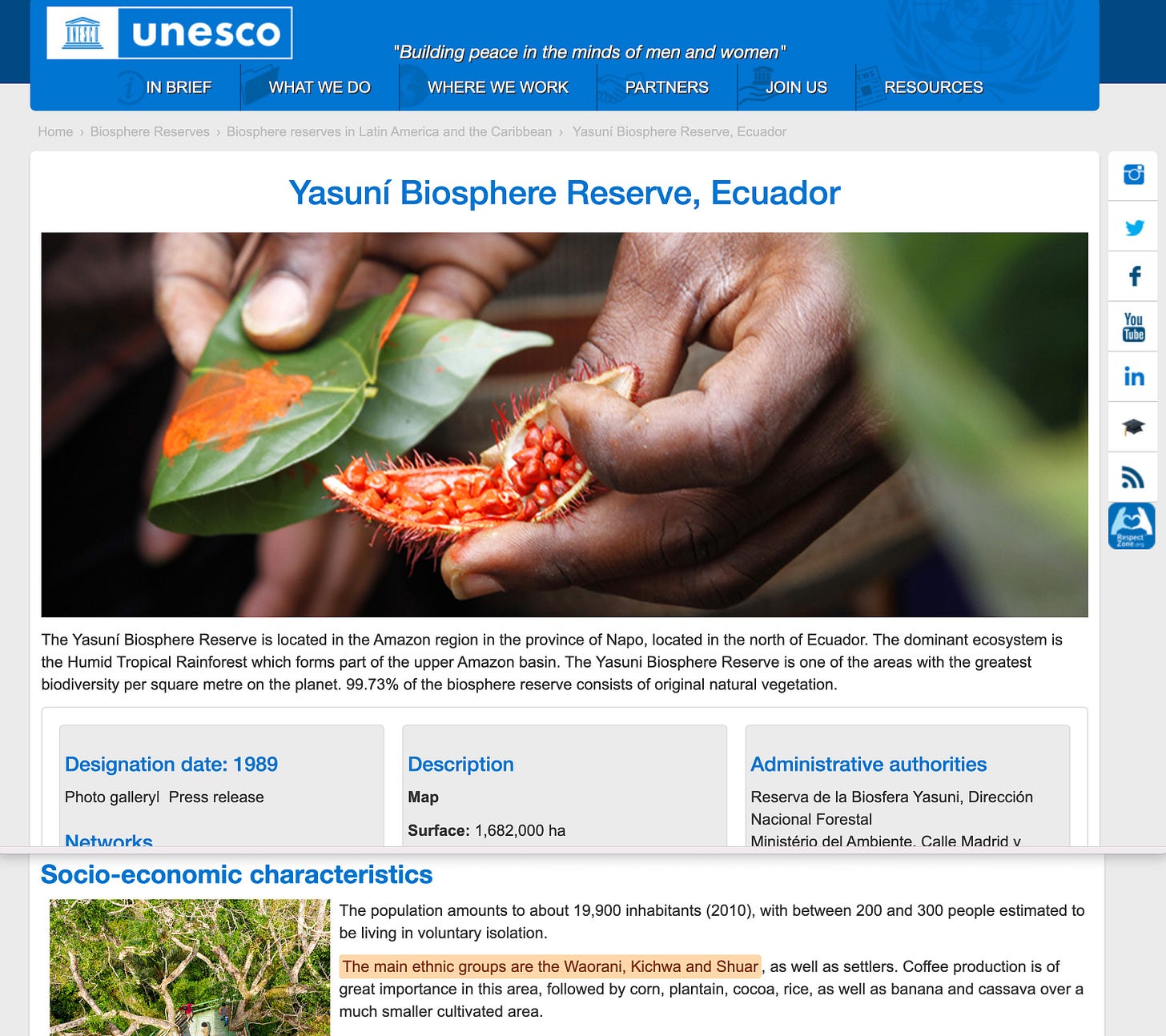It’s been now 7 months since I first crossed paths with the GEF. And while that might now appear an almost lifetime in some regards, truth is, they’ve never been terribly far from anything I’ve looked into.
At the time I was looking into One Health, and in my pursuits thereof, I managed to ignore all the other atrocities on their webpage - though, in fairness, there are so many of them, and it does take a while to decipher their full catalogue of disasters.
Regardless, in the article I discovered the below, though at the time believed the former were just distractions from the final item; biodiversity, chemicals and waste, climate change, ocean health, food security, sustainable forest management, and sustainable cities.
How naive I was.
And halfway down that page, we see a range of cities, organisations like the World Bank, UNEP, UN Habitat… and the Convention on Biological Diversity.
The article can be found here, though as said, this is perhaps a little bit roundabout, due to my understanding back then being behind where it is today.
In fact, there are so many things here that - on a later read - are fairly worrying. We could start by outlining UN Habitat, who in 1976 suggested the end of private property in this report. Of course, on the back of the 1968 Biosphere Report, that’s hardly a surprise, but the latter is the more well-known document.
And following all the obvious links to the CBD/UNFCCC, we find the Global Platform for Sustainable Cities, leading through C40 to 15 minute cities which we’ve all come to love of course - though I don’t think the early rollouts are doing rather as well as they were hoping. Which is good, because armed guards and control towers probably don’t trail by far, judging by the 1961 experience in Berlin.
But all of that, supposedly, is about saving the climate, saving biodiversity, though probably mainly - about saving the wallets of the corrupt few. And don’t for a second think these people will back down on this initiative; here’s a 2023 document, courtesy of the - allegedly - Conservative government in the UK.
Frankly, Thatcher must be spinning in her grave. In fact, I will go as far as to state - the only - only - difference between Labour and the Conservative Party is the order of implementation of the plan… though they will probably distract you with different red herrings along the way, while the MSM turns up the lies to a solid 11.
And it’s a truly interesting report. Together for the Planet, it claims. Below the genuine topic is revealed - UK International Climate Finance Strategy, which triumphantly reveal that they have put 910,000 hectares under sustainable management.
And yes, this is about Blended Finance, with a mention of the Global Environment Facility. But how exactly is the GEF related to all of this?
I wrote on the topic of Blended Finance only recently. I do have some minor updates in that regard, but I defer those for another day.
And I covered Biosphere Reserves only a few days back. Both articles are contextual on the topic of the GEF.
Now, let’s head back to that page above, because it outlines a fund. The Meloy fund.
The Meloy Fund’s partners and investors can be located over here. GEF, USAID, and others, like JP Morgan.
Meloy invests in a range of ‘ideas’. Here’s one. The Global Fund for Coral Reefs. They’re into Eco-tourism (which, presumably, is like tourism, but this time with a funky badge, reminding you how ‘green’ it is), plus… Blue Carbon Credits.
Which are basically just like regular carbon credits, but on steroids. Here’s the World Bank, and the Blue Carbon Initiative, both of which are totally reliable organisations, who certainly would never act out of self-interest.
Oh, and what a palette of supporters. IUCN and UNESCO - who launched all the biodiversity and surveillance initiatives in 1968 - and Conservation International, an organisation deeply worried about biodiversity… located of all places in Pentagon’s Arlington - ie, the defence headquarters of the USA.
But back to the fund, and back to more blended finance, with this project of theirs at the North Oriental Mindoro part of the Philippines.
… you know what’s coming, right? Because that site is a UNESCO Biosphere Reserve.
Yes, really.
In fact, when you start to look through UNESCO’s ‘Biosphere Reserves’, you realise that there are rather a lot of identical blended finance arrangements, involving the GEF.
And I really am not kidding here. I can pull a lot of these out of the hat.
Let’s get straight to the point. What they are doing is monetising ‘ecosystem services’ of UNESCO ‘Biosphere Reserves’.
Of course, soon enough those ‘ecosystem services’ rendered through said ‘biosphere reserves’ will be used to create Natural Asset Companies.
And these ‘ecosystem service‘ leases are where the Landscape Approach comes in -
I have a crash course on this new, fraudulent economic framework incoming, a framework which they’ve progressively constructed since at least 1968. But - in short - here’s what appears to be happening -
Nation pledges conservation area to UNESCO’s Biosphere Reserves.
UNESCO addresses the GEF about this new potential.
GEF structures ‘Landscape Approach’ blended finance deal/s on basis of ‘reserve’.
Said ‘landscape’ is a lease; a temporal right of exploitation.
Like 2008’s CDO’s, this investment is tranched;
A safe, high-return component, offered to private investors.
A risky, low-return component, offered to public investors (taxpayers).
What they in short engage in, is not so much conservation, but rather, a transfer of control over assets into private hands. Because there is no fundamental reason why private owners shouldn’t be able to offer leases for said ‘landscapes’.
But that’s not all - because all of these investments obviously need a return. And in that regard - the GEF thought of that, too.
Now, the argument here of course is that it’s of benefit to the taxpayer, because it brings in tourism, etc. So I set out to find an early, similar fund, because much like 2008 subprime was led by a ‘teaser’, I would expect the same to be the case here - and this is what I came up with - Iwokrama, in Guyana.
And there are a range of reasons why they’re of interest - here’s one.
Yes, it’s an interesting case. Launched in 1996, though it received a $3m grant from the GEF already in 1993. Yes, really. The GEF launced in 1992, so this must have been one of their very first issued grants. What’s also of interest here, is that the ITTO offered $10m for timber only 2 years later. In other words - international ‘investors’ really wanted to get their hands on the timber, and the rest… just fortuitously followed.
And while technically not a UNESCO Biosphere reserve, it wasn’t for lack of consideration. In fact, their summary report 1998-2002 documents MAB status being contemplated.
And via their page you can see exactly which ‘ecosystem services’ were considered in 2006 - along with their three primary business ventures; timber, ecotourism, and training.
And as for their financials… well, as I said, those are of interest because they allow us to see exactly how ‘successful’ this initiative is. And first, figures for 1998-2003, and… well… it’s all about those ‘donations’. Out of $7.3m in income between 1998 and 2001, $6.9m came from grants.
And when those grants dried up in 2002, revenue dropped sharply from $2.8m to $2.1m, and further to $1.3m in 2003.
The sharp drop continued in 2004 - with revenues now down to $750k. In other words, they received a large injection of cash early, presumably with a stated aim to build the business… but said business didn’t as rapidly materialise (for Iwokrama, anyway), and consequently, they had a let a lot of staff go.
In fact, grants still made up two thirds by the end of 2004, meaning organic income came in around the $250k mark.
Annual reports then appear to go missing (which is convenient), but in 2018, grants still accounted for 36% of total revenue of $1.7m = $600k, meaning that after 20 years in business, revenues from all ‘ecosystem services’ combined only came in around the $1m mark.
And though 2019 leaves out detail, they do disclose that tourism revenues increased by 35%; these were 22% of $1.7m = $375k in 2018, hence $375k*135% = $500k in 2019, and consequently total revenues edged up around the $2m mark. However, as part thereof, grants increased to 40% of total - ie $800k. In short - in 2019, their organic revenues were around the $1.2m mark.
However, head back up to the Prince Charles screenshot above and it for 2019 states - ‘Whilst the Centre continues to receive support from donors and corporate support programmes, in recent years it has relied heavily on the Government of Guyana to support its core costs‘. Really.
Even during the ‘good’ years it was a financial disaster from the perspective of the Guyana people.
As the scamdemic arrived, the budget further predictably… collapsed, and the government had to further step in. In other words, from an investor perspective, these numbers are… exceedingly underwhelming, given the presumably prime forests which the ‘stakeholders’ no doubt capitalised on.
Fortunately, it’s not the only ‘ecosystem service’ of theirs to cash in on, and within days of Kunming-Montreal Global Biodiversity Framework 2030 release, a press release was issued. Hess had licensed their carbon credit ‘ecosystem services’.
Is this really what they had in mind when these lands were pledged in 1989?
Or was it, though. Because those blended finance agreements can include phrasing, ultimately demanding the public cough up should the yield fail to materialise.
As for the KMGBF2030 - that’s essentially the document which enable NACs.
-
But let’s return to Conservation International., who naturally have their very own soapboxing actor on board. In fact, they have two, including Edward Norton. They also have Wes Bush, who’s a former CEO and chairman of Northrop Grumman.
And perhaps it’s just my cynical nature, but defense-gone-environment? LOL!
But the entire article is just part hilarious, part tragic. Because while their controversies outline an organisation with a certainly sketchy past, they also have a focus on indigenous peoples, a concept which you’ll see here, there and everywhere in documents courtesy of the United Nations, … which I’ve never quite understood. However, I suspect I now do. Unfortunately.
See, you’ll also find the former CI CEO, Peter Seligmann, a founder of Nia Tero, yet another blended finance fund, this one deeply caring about indigenous people and carbon credits.
And - golly - they even have a presence at Convention on Biological Diversity meetings.
As it transpires, Nia Tero were present at Amazonia Rising 2021… through David Rothschild. Also present - Dougles Eger, of the Intrinsic Value Exchange - yes, that’s where the Natural Asset Companies yet again rear their ugly heads.
Around a decade back, the Wampis Nation stood up to oil drillers on their home territories. Naturally, David Rothschild and Nia Tero were all on board - standing up for the indigenous peoples, and all.
Oh btw - the Wampis people are also known as the ‘Shuar’.
… and the Shuar, it transpires, inhabit the Ecuadorian and Peruvian Amazonia.
And you know what they also are?
Outlined as living on a UNESCO Biosphere Reserve.
In fact, from a valuation perspective -
‘An economic valuation study was conducted on the Yasuni National Park. Using the benefit transfer approach, it was estimated that the value of the flow of non-market ecosystem services in Yasuní National Park is between $2 and $5.4 billion per year. The ITT oil block is roughly 15% of Yasuní National Park which makes the value of the oil block in terms of ecosystem services $300,000 to $810 million US dollars. This means that after 5 to 7 years, the value of Yasuní would surpass the benefits of the oil exploitation, which is valued between $14 and $28 billion dollars‘
Now, I hope this is just me being a cynic, but it would appear a possibility that Rothschild and his fellow Nia Tero staffers could have an ulterior motive here.
In fact, all this focus on indigenous peoples - could it be suggestive of them utilising previously unheard of tribes for a financial return?
I honestly have absolutely no faith in these people, and consequently, can’t rule it out.
Though I do hope I’m wrong, mainly for sakes of those indigenous people.
-
Postscript - I only just clicked ‘publish’, as I run into this document. I am really looking forward to the mental gymnastics required to explain that one away.





